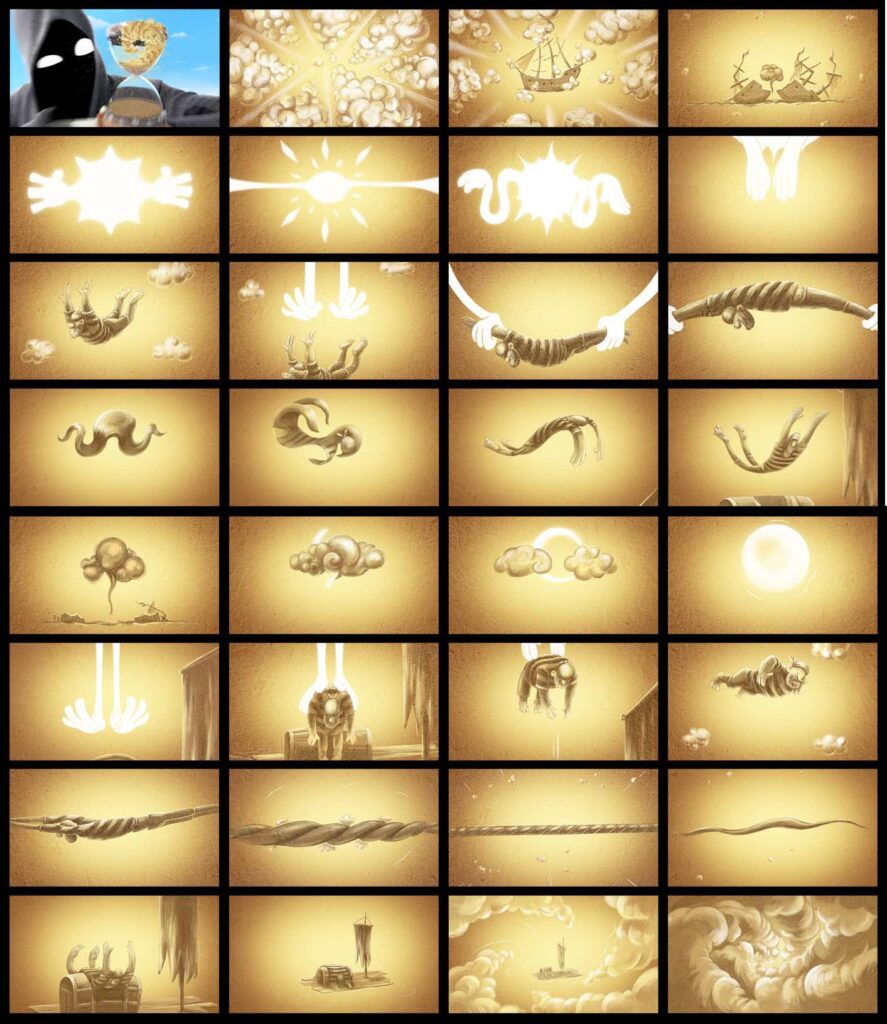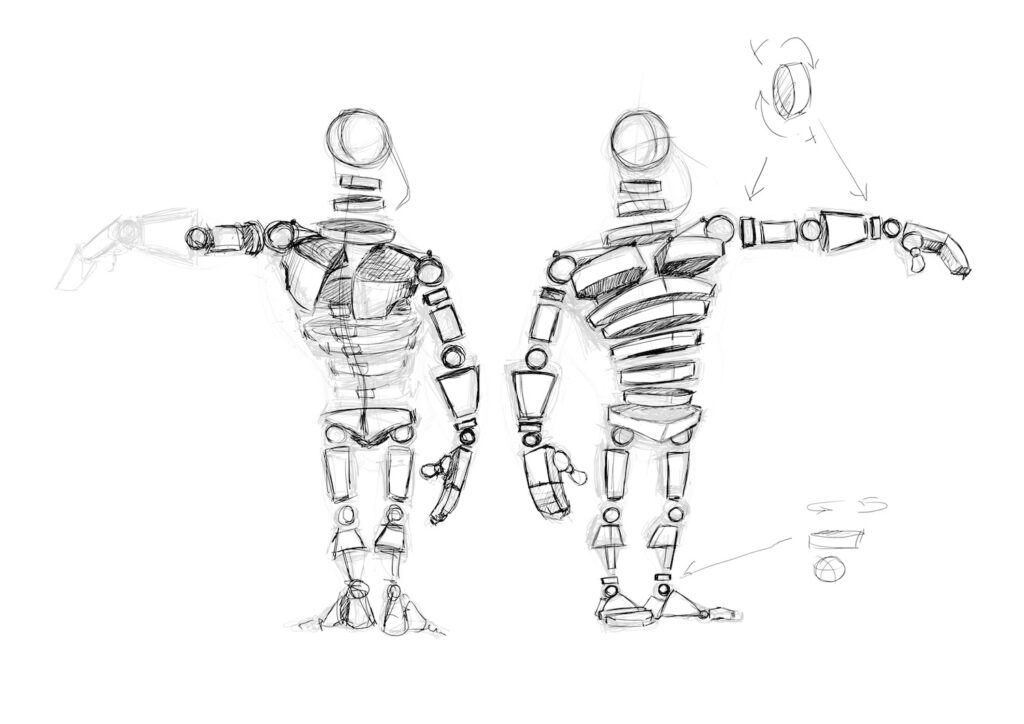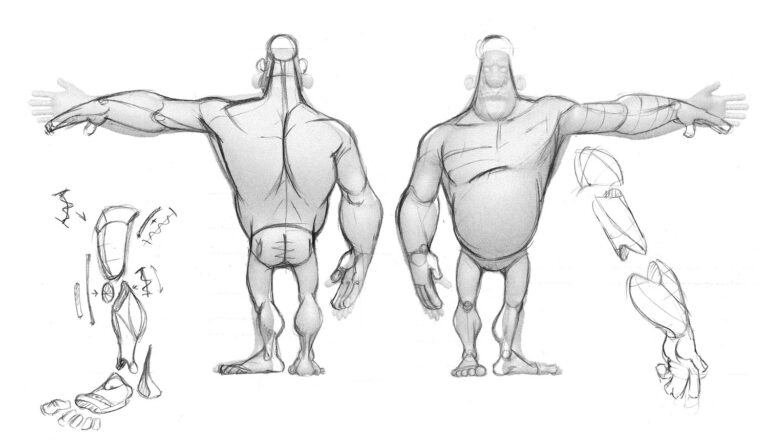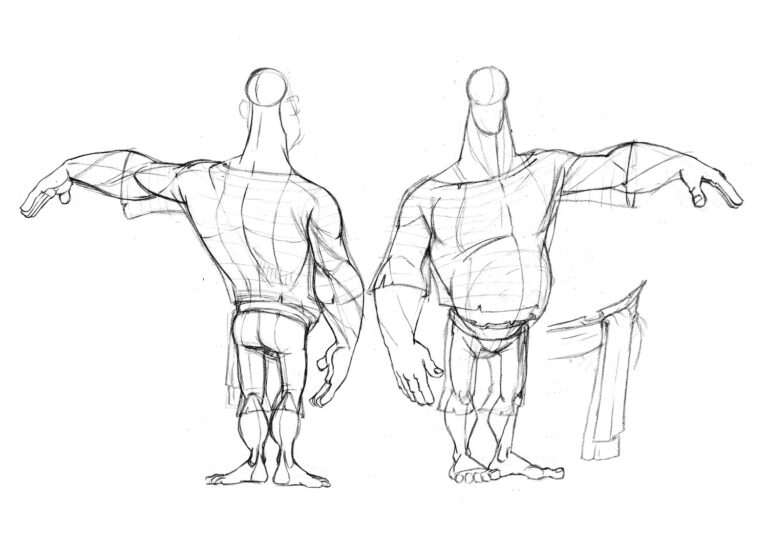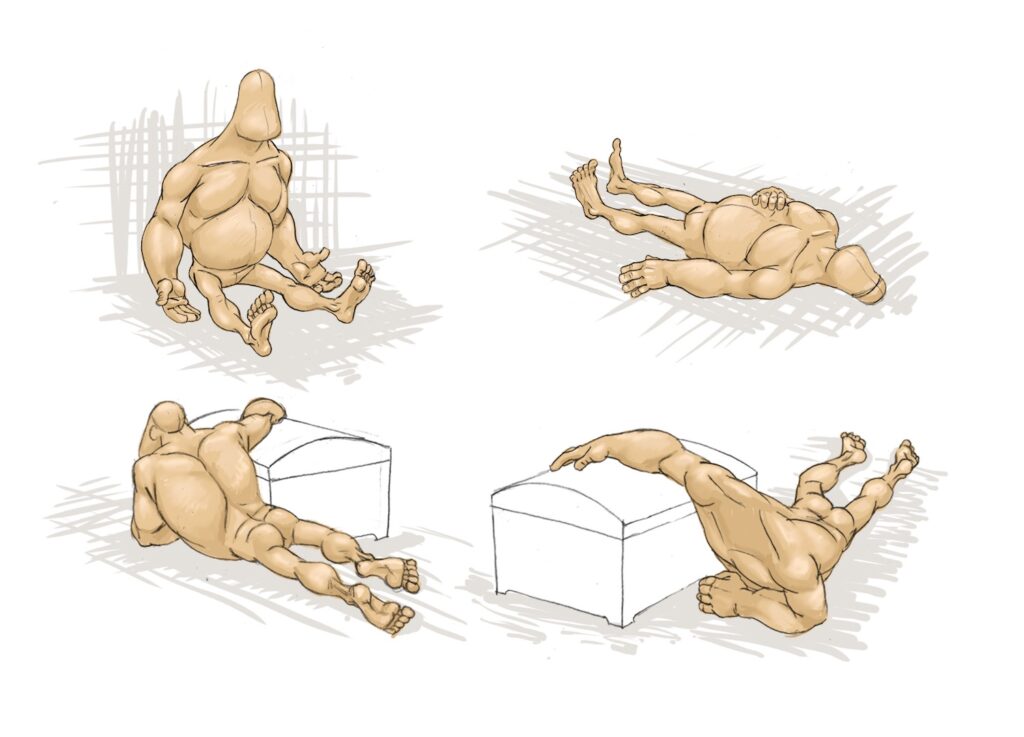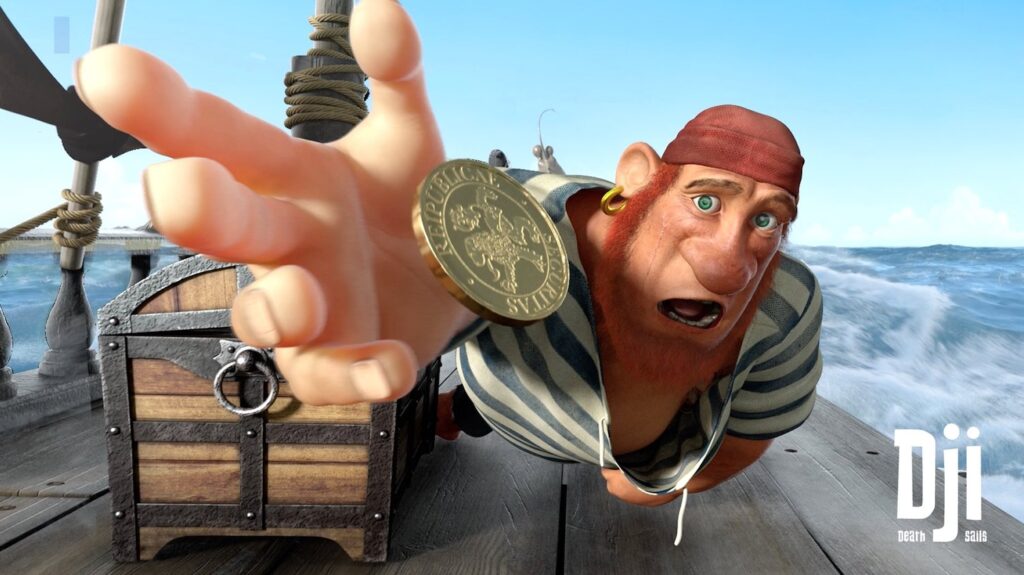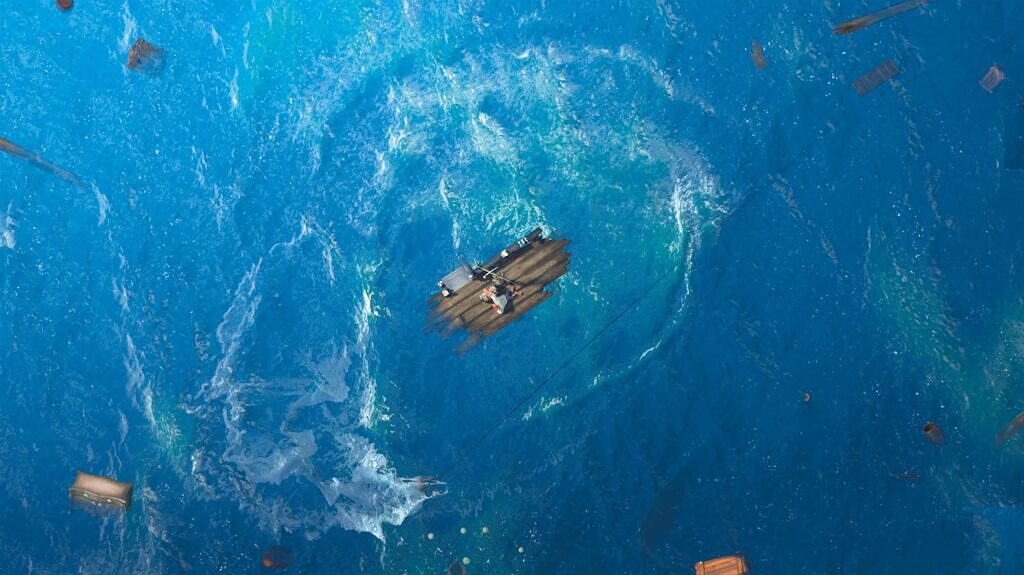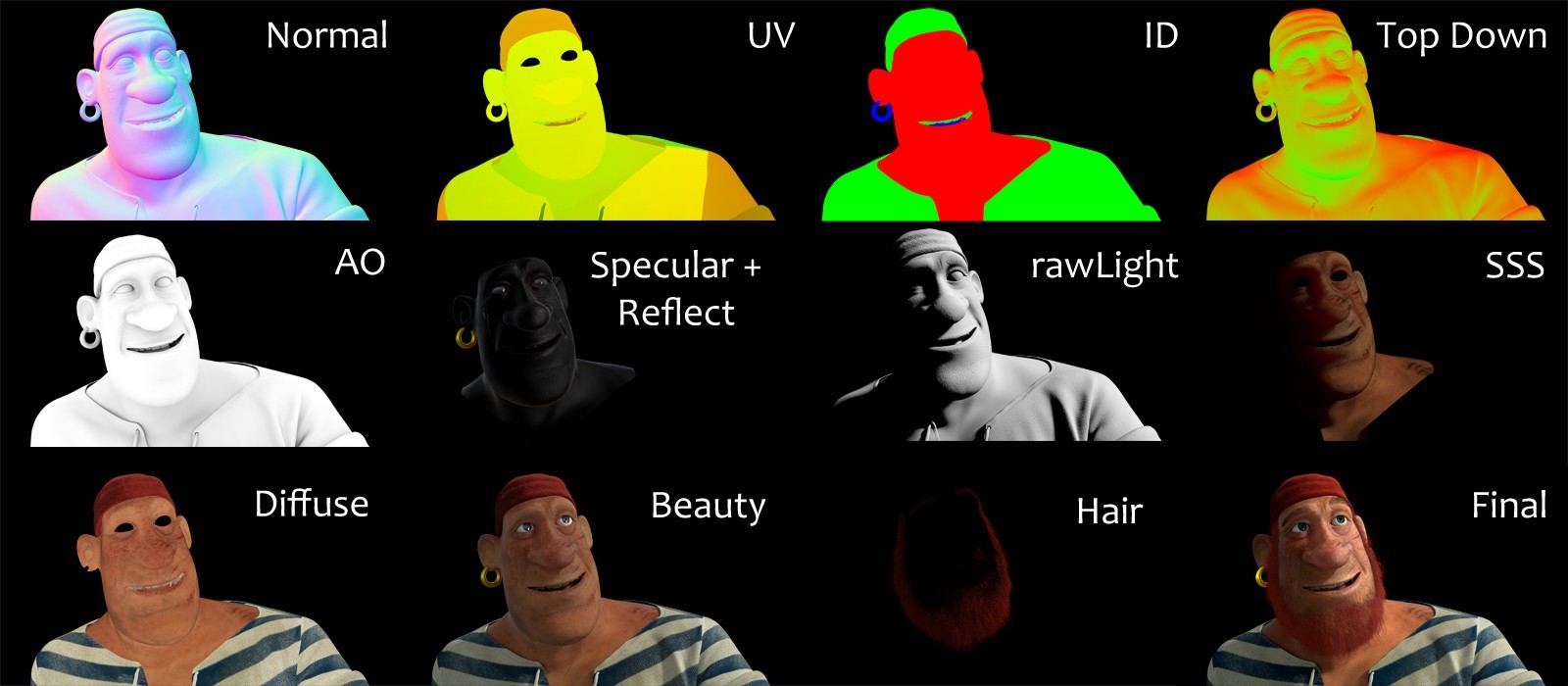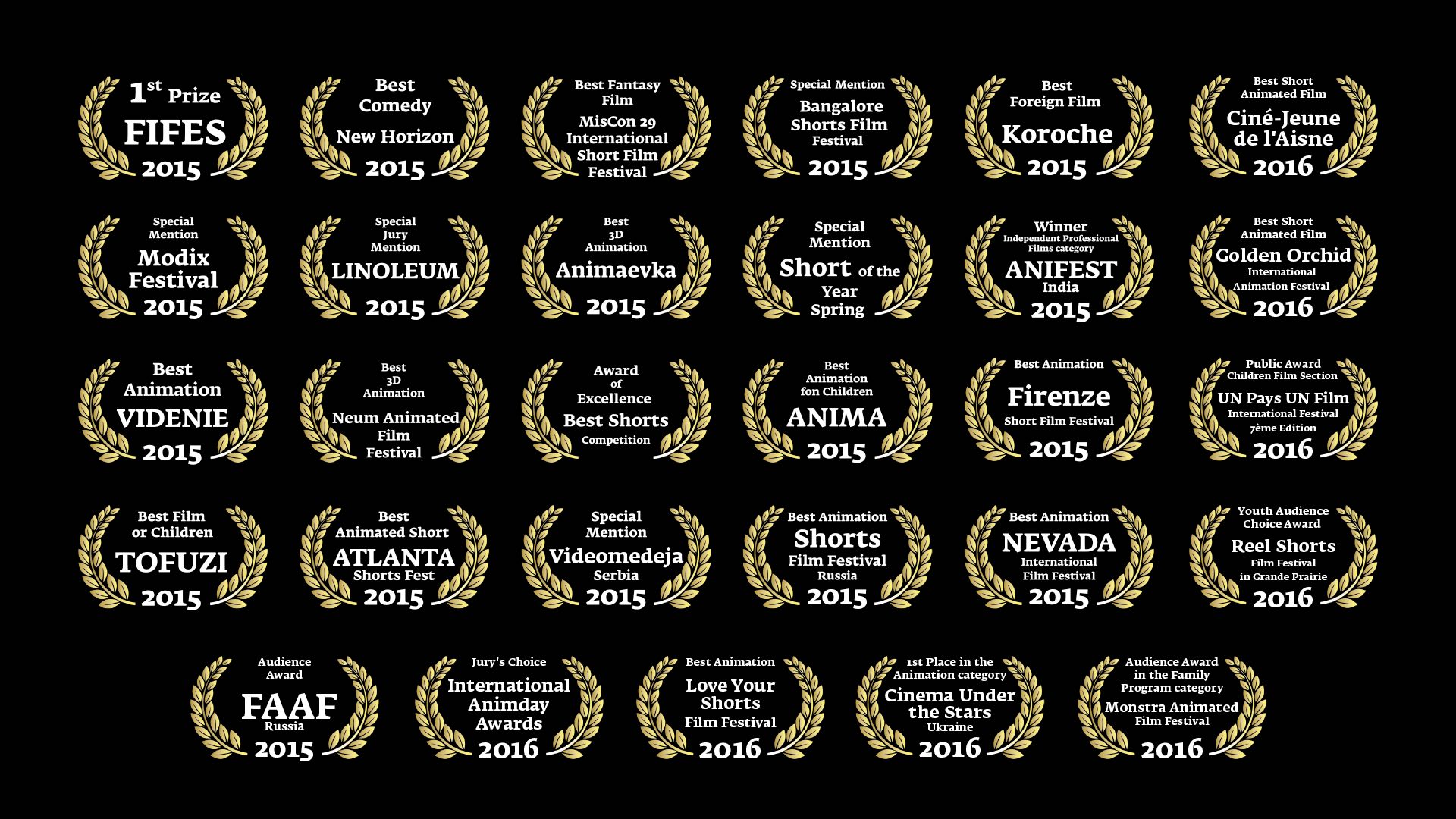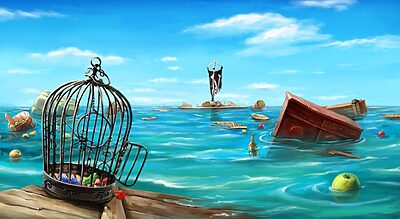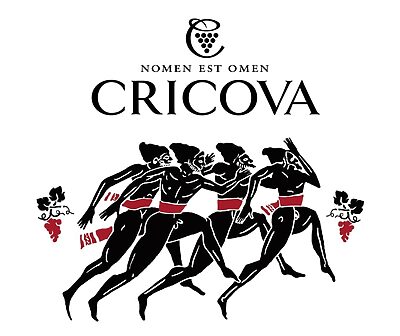In the previous post we described the plot and the characters of the cartoon. Now it’s time to tell the rest of the story.
Animatic: “Cartoon sample”
The animatic is the black and white version of the cartoon, which helps to clarify when and where the action happens. But mainly, it helps to understand whether the plot is entertaining or boring.
So there was a lot of fuss: we examined the scenario down to the last detail, created gags, changed the editing and then went through every detail again.
After 3 months, we generated the draft-animatic, then it became clear that the cartoon shall be awesome and that the characters shall be vivid and memorable.
While editing, we were also working on the tweening, which reveals the sad life story of the pirate.
Once upon a time, in the middle of the blue sea, a pirate ship wrecked. Maybe it happened during a naval battle, or maybe because a sea beast attacked, or maybe due to sabotage. Nobody knows exactly. Only one pirate has survived. He drifted on the sea for many days, lying on the ship wreckage. By the end of that time, he ran out of provisions and drinking water. He’s been tormented by thirst for several days; the sun is cruelly scorching and killing him slowly. Only a miracle can save him from death.
Setup: “Pirate guts”
As mentioned above, the complex production process is divided into several stages, which have very difficult names. Let’s take it step by step.
The rig represents a set of control elements which are placed in the character, similar to the skeleton and muscle ligaments of the human body ???? The setuper (also called the rigger or the “chiropractor” of the animation world) hands over the finished character (which must move according to director’s plan) to the animator. If not for these amazing control elements, the animator would have drawn by hand every character’s moves, limbs, threads, hair, etc. singlehandedly. SINGLEHANDEDLY! Every shot, literally! That’s crazy! So, many thanks to riggers for their massive work. If the character has good “skeleton” and “ligaments”, the animator may lift its elbow and the hand will follow, and it won’t stretch or tear off.
The pirate is a pretty bulky character, nonetheless, according to the plot, he has to die of thirst in both passive and active manners. This means he has to move. So, in order that this large character could properly move, from the anatomic point of view, we decided to add muscles, which we’ve never done before.
Key poses for character: (character’s main poses, which will be used during the cartoon action).
How does the pirate rig look like:
The big fish is a positive character. So there is more of the fish to love! In order for the giant character to move correctly and appropriately, we created a separate setup for fins, eyes, antennas, etc. This means that every body part had its own “skeleton”, due to that, the Fish was very mobile and organically deformed.
Animation: “Bring the characters to life”
This is the longest and the most expensive production stage. A qualified animator may design 1 second per day. Let’s do the math. There are 22 working days per month, i.e. one minute of animation is designed in 3 months. Pretty tough, huh? But the process was even slower because we had trainees. The cartoon duration is 5 minutes. So, it turns out that one person may design the animation in 1.5 years. We’ve finished it in one year, because there were 4 specialists working on it. A little too expensive. But it was awesome. That’s what it takes to generate a high quality animation and to have a constantly dissatisfied director.
All right, our animation is about water. Therefore, the main task is to create the interaction between the character (Dji) and the water (the ocean). Dji should run on water, and not just walk. We’ve never dealt with this before. So, we sent the “poor” character to practice sport, to develop the running technique and speed, because (according to our calculations) Dji had to run extremely fast, so his weight won’t drag him to the bottom of the ocean.
The fish animation was tough, too (it was similar to Dji’s case), because we didn’t know how the fish should interact with water surface, taking into account its size and weight. Therefore, in order to understand the dynamics of our Fish, we started watching how the blue whales jumped out of the water and how they immersed in it again.
Additionally, there were several ending options. We decided that the pirate has to show his pirate’s greed, so we started looking for the emotion (and action) which the character should have after “landing” in the bar (oops, a spoiler!).
So, when we finished this animation stage, it was already evening, and the team had nothing left to do. So the animators decided to have some fun ???? In short, this was the moment when the pirate and Dji’s dance was born, which we used at the final captions ???? Nothing was left out.
Cloth simulation: “How to sew a hoodie?”
“What simulation are you talking about?”, the uninitiated people might ask. But we know that the “Dynamic Simulation represents an automatic calculation of the interaction of particles, solid/soft bodies, etc., with modeled forces of gravity, wind, extrusion, etc., as well as with each other”, as Wikipedia explains. But we claim that simulation represents the implementation of law of physics into the animation world ???? This means that if the cloth is blown, then it has to be blown like in real life, and if the ocean has waves, then they have to look real, not like wallpapers ????
Where were we? Ah, yes. This time we have had enough simulations. So we were making a cartoon about water. Animators sympathetically clapped us on the shoulder. Later about that. Now we will tell how we were able to simulate the movements of Dji’s hoodie.
In our cartoons, Dji is very active, so we had to work a lot with his clothes. For those who are curious, we use nCloth – a Maya toolkit. Plus we used a standard working plan: we separated Dji’s hoodie into smaller segments (just like real sewers), simulated and edited each of them separately, and when the producer had nothing else to add, we “sewed” all these segments back together.
One more thing. The question “What does Dji have under the hoodie” is still open. Actually, he has bones, but because the hoodie wasn’t fitting right, we had to design muscles on him ????
Water simulation: “How to create the ocean?”
It all started with producer’s words: “We need to design water!”. So we made a virtue of necessity. We started planning, trying and making a few samples in the Maya programme.
After the director viewed our samples, he clutched his head, called us on the carpet and he “calmly” explained that we misunderstood his requirement. The truth is that we had to draw the ocean, and not just some water! And it had to include details, such as: splashes, sprinkles, foam, etc. As a result, all of our samples were thrown in the bin and we had to start the work all over again.
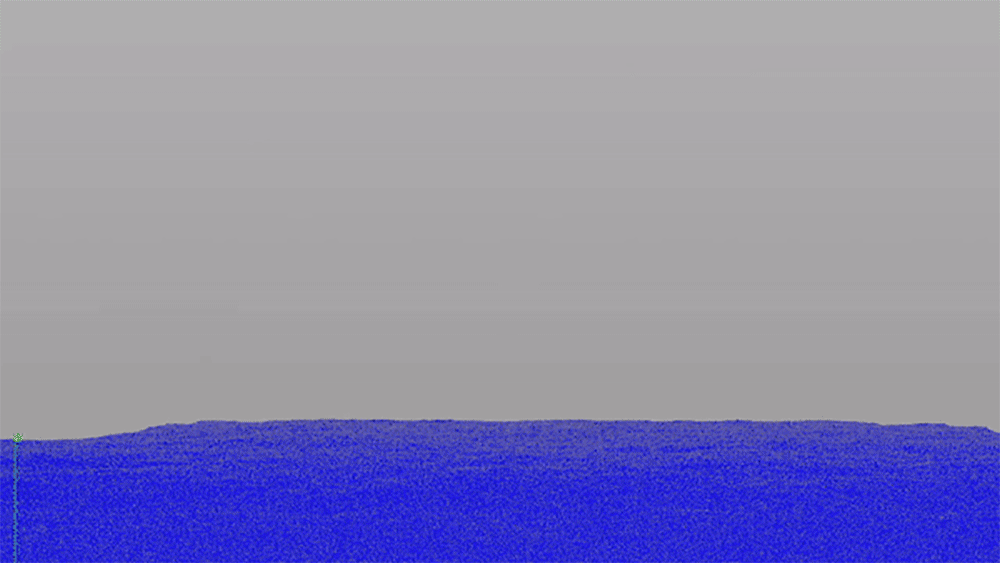
In fact, the water represents the fourth character: each splash (there may be a lot of splashes in one shot) has to look real and to match the director’s vision. In some shots there were used several splash types at once.
Therefore, in order to design a proper sea, you have to go on a proper holiday. Or, at least, provide the proper examples of sea for the special effects pro.
Designing the water was a very interesting challenge, because our studio has never worked with that before. The water itself is a fascinating matter, which requires large computing power. We had to figure out how to fit into the given limits and complete the big task, without damaging the artistic concept.
Because we are a poor Moldovan studio, we couldn’t afford buying additional technologies to process absolutely all details, which the viewer shall see. So we had to literally divide our work into small steps: the computer was processing only the segments of Dji walking on the water, and not the whole ocean (it’s like instead of buying a whole carpet for the floor, you place only carpet pieces of footprint size, to be able to get from one room to another). So there you go. As they say, necessity is the mother of invention ????
If you don’t believe me, see it for yourself:
Visualisation: “Glue the layers”
To make the animation something like “Wow, cool, amazing”, you have to glue many shot layers together. If decomposing the pirate (not to the atomic level), here is how he will be looking like:
We made all the calculations at our render-farm. One shot (the scenario has at least a few shots) equals to one night, but before the confirmation, we had to render each shot 2-3 times.
At the beginning, we rendered the cartoon in the V-Ray programme. We designed each layer separately: water, foam, beard, hair, objects, characters, etc. We spent a lot of time in searching for the water visualisation (with turquoise spots, light refraction) and trying to reproduce the same effects in 3D. The final water setting was made in composite (kind of Photoshop, but for video materials).
Compositing: “The cartoon is almost finished”
The most captivating shots were the ones where the characters interacted with water (the fish jumps out of the water, Dji is drag on the water). But since we were aiming at such things that only large studios do, and we didn’t have so many resources, we had to optimize the process and break it down into details.
In fact, not every detail of the 3D animation should be designed in 3D. You can design them in 2D as well, and nobody will even notice! For instance, the storm clouds above the ocean ????
The compositing stage represents the “gluing together” process of the application, where we put together the 2D and 3D pieces, add some nice elements (different atmospheric elements: fog, haze, etc.), beautiful splashes, make gold look more like gold, transform simple transparent water into ocean water, etc. ????
Music. Simply music.
The music and sound effects are the most important elements of the animation. Why? Because they create the mood. Believe it or not, but we can easily carry the viewer from the green Ireland over the Pacific Ocean, lie on the raft – made of ship wreckage – and even sunbathe, while Dji is running on waters.
Our friends accomplished this task in an amazing way. Please, meet them: Valentin Boghyan, Valentin Shkirka, Vladimir Kolesnikov.
Well, the cartoon’s finished!
Although the path to creating the cartoon was difficult, we enjoyed the working process. So we hope you will enjoy watching it ????
Enjoy the cartoon!
UPDATE: A year later, we decided to improve our post a bit and to tell what other things happened to the cartoon during this time. Actually, a lot of things happened! We managed to visit all continents (except Antarctica), to collect almost 50 awards and to accumulate almost 10 millions (TEN! We are shocked!) of views on social networks ????
Here are our awards:
Great! We have to celebrate that! And our characters start to dance, because they are very joyful and nothing frightens them!
Cast:
Directed & Produced by: Dmitri Voloshin
Executive Producer: Sergiu Chirillov
Production Manager: Ana Voloshinovici
Lead Artist & Character Designer: Serdar Djumaev
Story: Vadim Novak, Dmitri Voloshin, Serdar Djumaev
Supervising Animator: Valentin Naku
Music by: Valentin Boghyan, Valentin Shkirka, Vladimir Kolesnikov
Look Development: Sergiu Chirillov
Supervising Character Setup: Andrey Orehov
Animation: Stanislav Popov, Evgheny Izmailov, Andrey Orehov, Valentin Naku, Emil Lungu
Final Dance “Mirlic” Theatre: Maxim Dorofeev, Pavel Mikhailov
Rigging: Valentin Naku, Andrey Orehov, Evgheny Izmailov
Storyboard & Layout: Serdar Djumaev
Assistant Producer: Ekaterina Sharaeva
Modeling: Vladimir Taukchy, Ruslan Buzulyak, Andrey Shimbaryov
Story Adviser: Anastasya Berzoy
2D Artist: Serdar Djumaev, Alexandru Grebencha, Alexandra Graur, Tatiana Ketryan, Yulia Zaharova, Dmitri Travnikov, Andrey Sitari, Lev Voloshin, Vitalii Ushanly
Edited by: Dmitri Voloshin, Denis Kirilyuk
Shading & Lighting: Maxim Baraliuc, Alexandra Kiriyak
Visual Effects: Emil Lungu, Maxim Baraliuc, Ghennady Dokien
R&D Water: Ghennady Dokien, Alexandr Cherepanov
Techical Director: Serghey Logvinenko
Compositing: Sergiu Chirillov, Denis Kirilyuk
Special Thanks: Andrey Matkovsky, Roman Shtirbu, Dorin Doronchanu, Vladimir Shimansky, Ion Melnic
